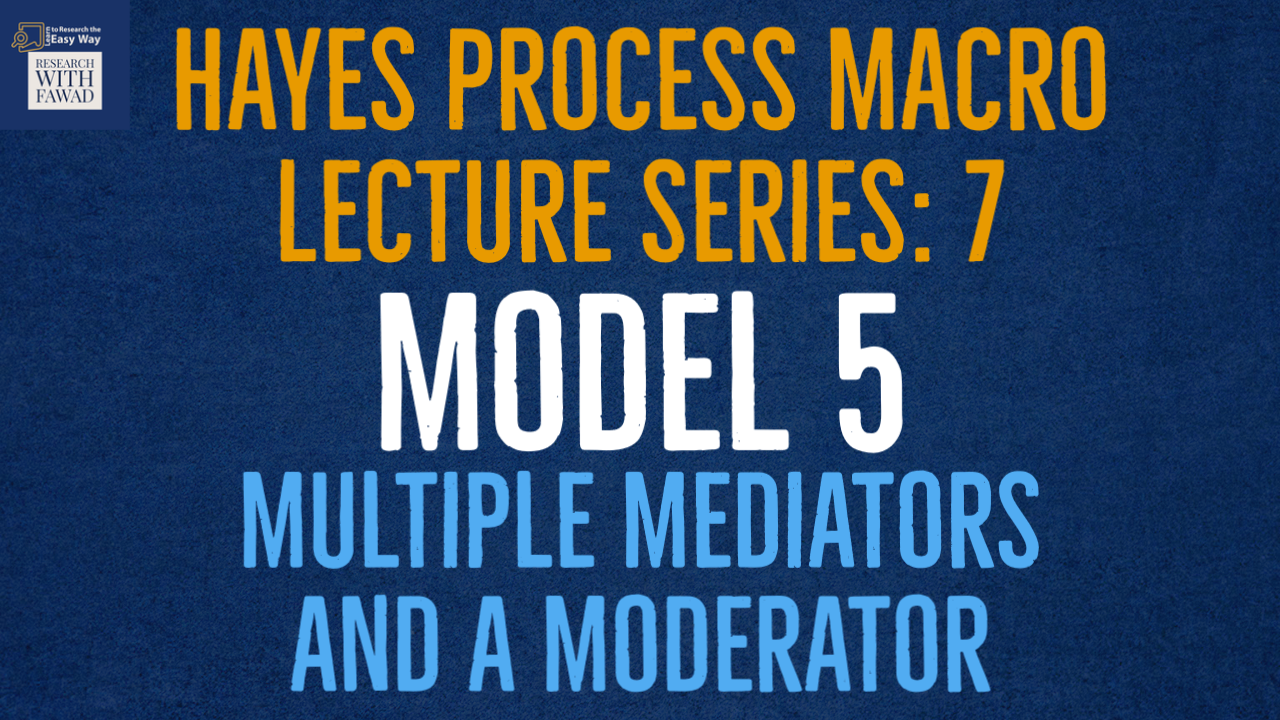
Hayes Process Macro - Lecture Series
The tutorial will guide on Model 5 of the Hayes Process Macro for Moderation and Mediation.

The tutorial will guide on Model 5 of the Hayes Process Macro for Moderation and Mediation.
Next, is the output for OP
Culture -> Assurance -> Performance
a1 (0.5382) * b1 (0.2937) = 0.1581
Culture -> POS -> Performance
a2 (0.7665) * b2 (0.1916) = 0.1469
Indirect Effects are Significant.
Partial, Since both Total and Direct Effects are Significant.
Next,the Conditional effect of X on Y can also help in the interpretation of the graph.
Moderation Analysis
H1: Role Ambiguity Moderates the Relationship between Collaborative Culture and Organizational Performance such that higher role ambiguity weakens the positive impact of collaborative culture on organizational performance.
To test the hypothesis that the role ambiguity moderates the relationship between collaborative culture and organizational performance, Hayes process macro was utilized.
These interaction/moderating effect (Culture * Role Ambiguity) accounted for a significant (at 10% confidence interval) amount of variance in organizational performance, R2 = .0051, p = .00764. 0.51% change in the organizational performance can be accounted to the interaction term.
To avoid potentially problematic high multicollinearity with the interaction term, the variables were centered and an interaction term between collaborative culture and role ambiguity was created (Aiken & West, 1991).
The results revealed a significantly negative moderating role of role ambiguity on the linkage between collaborative culture and organizational performance (b = -.0570, t = -1.7776, p = 0.0764). This shows that a higher lever of role ambiguity, the impact of collaborative culture on organizational performance is weakened.
Furthermore, the graph shows a steeper gradient for low and average role ambiguity. The impact of culture on OP is much stronger at low and average role ambiguity. However, at higher role ambiguity, the line tends to straighten, this shows that at higher role ambiguity, the increase in collaborative culture does not lead to significant change in the organizational performance. Hence, higher role ambiguity weakens the impact of collaborative culture on organizational performance.
Mediation Analysis
H2: Assurance Mediates the Relationship between Collaborative Culture and Organizational Performance
H3: Perceived Organizational Support (POS) Mediates the Relationship between Collaborative Culture and Organizational Performance
The study assessed the mediating role of assurance and Perceived Organizational Support (POS) on the relationship between collaborative culture and organizational performance. The results revealed a significant indirect effect of of collaborative culture on organizational performance through assurance (b= 0.158, t = 3.856), supporting H2. The study also found a significant indirect effect on the impact of collaborative culture on organizational performance through POS (b= 0.147, t = 3.323), supporting H3. Furthermore, the direct effect of collaborative culture on organizational performance in presence of the mediators was also found significant (b = 0.218, p < 0.001). Hence, both assurance and POS partially mediated the relationship between collaborative culture and organizational performance. Mediation summary is presented in Table 1.